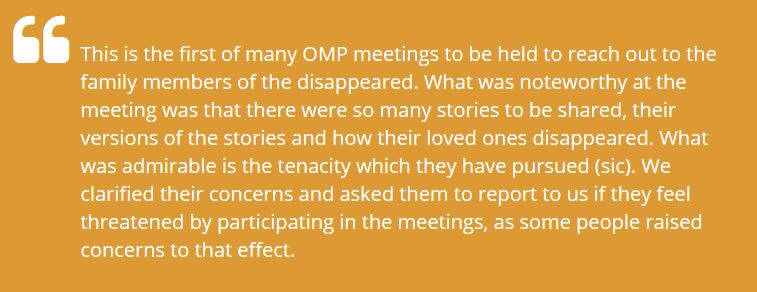Featured

Public and semi-Government sector employees exceed 1.1 million
 By Dr. Amara Satharasinghe
By Dr. Amara Satharasinghe
The importance of public sector is an indisputable social and economic reality throughout the world. The Public Sector usually comprises of organisations that are owned and operated by the government and exist to provide services such as public education, health care, national defence, military, police, infrastructure (public roads, bridges, tunnels, water supply, sewers, electrical grids, telecommunications, etc.) for its citizens.
Recognising the importance of the Public and semi-government sector employment statistics, the Department of Census and Statistics (DCS) has conducted periodic Censuses of Public and Semi Government Sector Employment. The first such Census was taken in 1980. Subsequently, censuses were carried out in 1985, 1990, 1994, 1998, 2002 and 2006 at intervals of four to five years. Since the devolution of power to Provincial Councils in 1987, employment censuses from 1990 onwards covered both the Central Government and Provincial Councils.
The latest round of the Census of Public and Semi Government Sector Employment was conducted by the DCS between 9.30am and 11.30am on 17 November 2016 and it is the eighth in the series of such censuses. The findings presented here, are based on data gathered through questionnaires personally completed by more than 1 million employees in these two sectors. This census did not cover the uniformed staff of the three forces: Army, Navy and Air Force.
The information collected at this census include sector of employment, age and sex, marital status, nature of appointment, level of education, major occupation group, professional/ vocational qualifications, language skills, district of the place of work, mode of travel to work, non- communicable diseases, level of ICT literacy etc. of the employees. Key findings of this census are presented here.
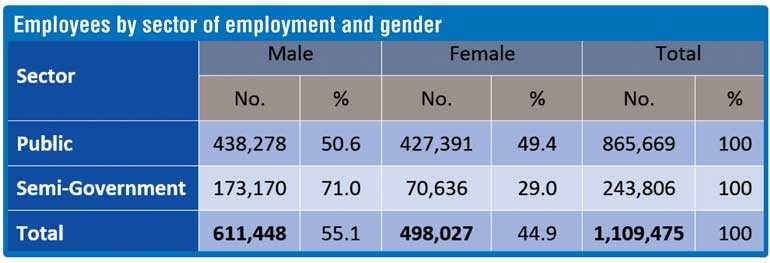 Number and Proportion of Employees
Number and Proportion of Employees
The total number of employees in the Public and Semi Government sectors excluding uniformed staff of the three forces: Army, Navy and air Force, as at 17th November 2016 was enumerated as 1,109,475. Of the total employees, 55.1 percent are males; 44.9 percent are females. In any employment census, it is usual to determine the employees as a percentage of the total population and as a percentage of employees of all sectors (including all other sectors). Total number of employees is estimated quarterly as well as annually through Sri Lanka Labour Force Survey conducted by the DCS.
Public and semi government sector employees constitute five percent of the population in the country. The proportion is the same across provinces, with the exception of North Central and Uva Provinces where it is six percent and the Western Province where it is four percent.
As a proportion of all employees i.e. in all sectors, public and semi government employees are 14 percent. This proportion is highest (18 percent) in the Eastern Province and lowest (11 percent) in North Western and Sabaragamuwa provinces. Sector of employment
Sector of employment
The census covered 32,750 institutions of which the majority belong to the central government. Majority of institutions coming under Provincial Councils comprise of schools and hospitals functioning under the nine provincial councils.
The majority of employees (65.3%) are attached to institutions coming under the central government - 43.8 percent public sector and 21.6 percent in semi government. The remaining 34.7% provincial employees. Of them almost all (34.3%) are public sector employees. Only 0.4% are in the provincial semi-government sector.
Nature of appointment
Nature of the appointment of employees was considered under ‘Permanent & pensionable’, ‘Permanent, pensionable & contributing to a provident fund’, ‘Permanent & contributing to a provident Fund’, ‘Temporary’, ‘Substitute’, ‘On contract basis’, and ‘Other’ categories. Ninety-five percent of public and semi government sector employees are in permanent positions. Further, 79.4 percent of all employees are entitled to a pension after retirement. More female employees were in permanent and pensionable employment (83.7%) relative to their male counterparts (69%).
Sex composition
Males constitute a higher proportion of public and semi Government employees: Of the total public and semi Government employees 55.1% are males; among Central Government employees almost two thirds are male. Higher proportion of employees are males in institutions such as the Department of Civil Security, Sri Lanka Police, Sri Lanka Electricity Board, Department of Posts, Sri Lanka Railway and Sri Lanka Transport Board, and Road Development Authority. Contrary to this, almost 62 percent of employees in the Provincial Councils are female. This is mainly due to female teachers working in provincial schools.
Age structure
While the majority (61%) of employees are in the age group of 30 -49 years, about one in four employees is over 50 years of age. Of those employees entitled for pensions, 60,092 are to retire on completion of sixty years, within the five-year period from 2018 to 2022. Number of persons to be retired in 2018, 2019, 2020, 2021 and 2022 are about 10,550; 11,300, 12,220, 12,560 and 13,460 respectively.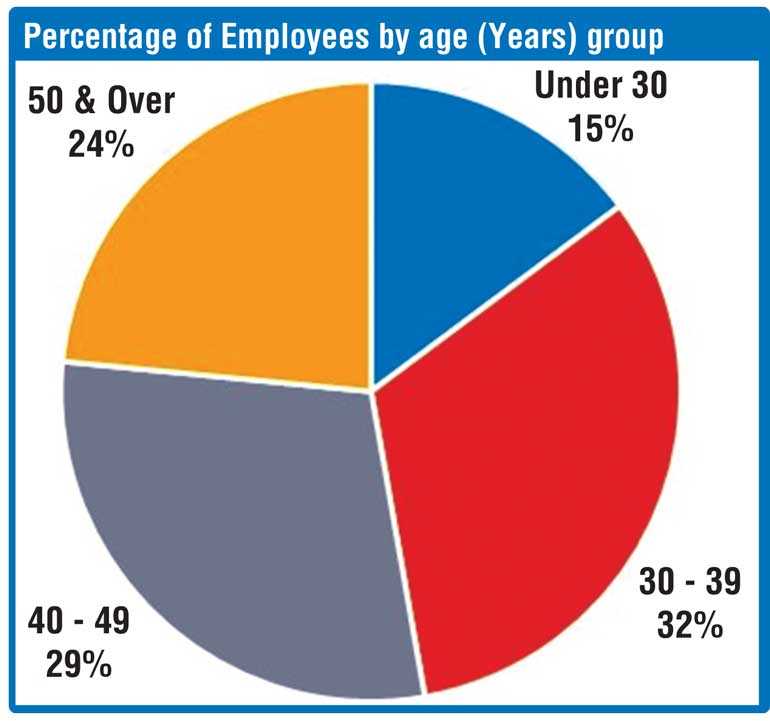
Level of Education
In order to assess the level of education of public and semi-government sector employees, the highest level of education was categorized into ‘Below GCE(O/L)’, ‘Passed GCE(O/L)’, ‘Passed GCE(A/L)’, ‘Degree’, ‘Post Graduate Diploma’, ‘Post Graduate Degree’, and ‘PhD’.
Over one third (35%) of public and semi government employees are GCE (A/L) qualified and little over one fourth ( 26.1 %) have degree or higher qualifications. It is noteworthy that 190,498 employees or 17 percent employees have not passed the GCE (O/L) examination. Among males this percentage is as high as 27.2% while among females it is only 4.8%. Further, having degree or higher level qualification among female is very high (36.7%) compared males (17.6%). There are 290,378 graduates employed in public and semi government sectors. Of them 2,014 have reported to have more than one basic degree. More than half graduates (54%) have degrees in the arts stream while Management/ Commerce graduates are 14.3%, and Science graduates only 10.4%.
District of work place
Public and semi Government employees are concentrated in the Colombo district. A total of 225,000 or one out of five are working in the Colombo district. This is followed by Gampaha and Kandy districts - percentage of each district is 7.3%. Percentages in Kilinochchi, Mullaitivu and Mannar districts is less than one percent. When Divisional Secretariat Divisions are considered, the highest number of employees are working in the Colombo DS division of the Colombo District and it is where 67,000 employees are working. It is followed by the Thimbirigasyaya DS division (63,000 employees). Thus, more than half of the employees of the Colombo district are posted within the Colombo and Thimbirigasyaya DS divisions.
Six hundred employees are stationed in other countries in diplomatic missions, banks and other institutions.
Mode of travel
Employees were asked how they travel to and from work: ‘Walking’, ‘Bus’, ‘Train’, ‘Assigned Official Vehicle’, ‘Official Group Transport’, ‘Private Motor Vehicle’, ‘Staff Service’, ‘Taxi’, ‘Motor Cycle’, ‘Foot Bicycle’, ‘Other’. The majority of employees (42%) use public transport to travel to work and it is noteworthy that almost one in four or over 277,000 employees use motor cycle to travel to work.
Non-communicable diseases (NCDs) are a growing issue. The workplace is recognised internationally as a crucial to address these health issues. Employees in any institution represent an important population category: their quality of life, health awareness, and ability to embrace healthy behaviours are expected to influence their productivity, avoid NCD occurrence, and reduce healthcare costs.
All employees were asked about the non-communicable diseases they are suffering from. Some commonly found NCDs were given and the respondents were allowed to mark more than one disease if they are suffering from more than one NCD.
The most common self-declared NCD is diabetes. Almost 6 percent of employees suffer from Diabetes - more males (7 percent) than females (4.5%). The second most common NCD is (5.3%) was high blood pressure.
Language proficiency
While Sinhala and Tamil languages are considered as official languages, English language is considered as the link language in the country. All employees were asked the level of their proficiency in ‘Reading and Writing’ and ‘Speaking’ of each language as ‘Good’, ‘Average’ and ‘None’.
Just over 84.2 percent report "good" proficiency in reading and writing in Sinhala language and 16.5 percent in Tamil Language. These percentages on the ‘speaking’ proficiency are 85.1 percent and 16.6 percent respectively.
In general, communication skills in English have been identified as an important workplace tool for success in business and have been correlated with career success and increase in financial rewards. The self-declared good proficiency in ‘Reading and Writing’ and ‘Speaking’ proficiency in the link language (English) of the public and semi government sector employees are 23.7 percent and 15.1 percent respectively.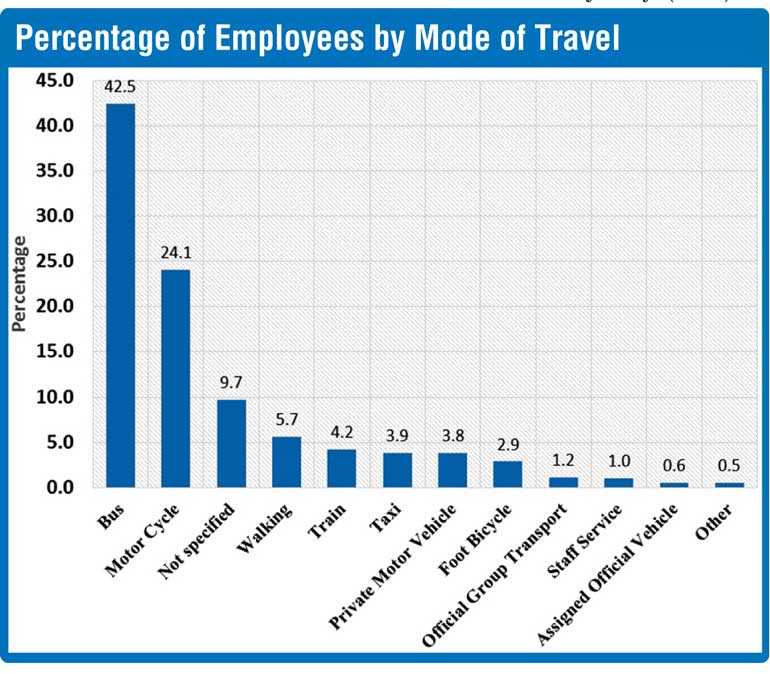 Ability to use computers, email and internet
Ability to use computers, email and internet
Technology is an integral part of the 21st-century workplace that any business without some level of technical savvy is likely to fail. It is that critical. Information and Communication Technology (ICT) can be used to eliminate non‐value‐adding tasks or to make them more efficient. ICT can also improve employee welfare, for example, through transforming the content of work by deleting unimportant activities. In this census information on self-declared ability to use computers, e-mail and internet was collected from all employees.
More than 60 percent of public and semi government employees report the ability to use a computer. Nonetheless, only 36 percent use computers to perform their official duties. Provincial sector employees are slightly more computer literate (ability to use a computer) with a computer literacy rate of 66 percent compared to that of the central government (61 percent).
According to the data from the census, 56.3 percent of employees are using the internet. Significant gender differences are observed in the use of internet. More than 63 percent of female employees use internet while only 50.7 percent of male employees have stated that they can use the internet.
Out of all public and semi government sector employees, 38.4 percent have said that they can use e-mail. Among males it is 34.7 percent while among females it is 43.0 percent.
Conclusion
In today’s economic environment, achieving improved performance and efficiency in public sector organisations is more important than ever to improve competitiveness, deliver better service, and reduce costs.
According to the literature, attempts to improve performance of the public sector have had mixed results in many countries. A precondition for new improvement programs to succeed where earlier efforts have failed is that they should focus on improving precisely those factors that make a public service organization perform well. These success factors have been identified as high quality of management, high quality of workforce, long-term commitment, open and action-oriented culture, and a culture of continuous improvement and renewal.
The report titled "Census of Public and Semi Government Sector Employment – 2016" released by the DCS, presents a wealth of information on the employees of these two sectors. A few basic but important features of the employees is the high female participation that has resulted in near equality in numbers, still youthful but a large elderly age structure, relatively low levels of education, still to be achieved standards of information and communication technology. Each of these has major implications such as the need for gender responsiveness, using strategies to maintain the dynamism while optimising experience and expertise, facilitating options for knowledge and skill enhancement of the employees. Recognising and responding to these implications will help to make the employees a satisfied workforce, predicting and preparing for future trends, as well as enabling the employees to deliver their services up to high standards. Information provided in this publication merits further analysis to produce policy and pragmatic guidance. They can be used to make informed decisions, to further improve performance of public sector workforce to more effectively and efficiently provide public services to the citizens of this nation.
*The writer is Director General of the Department of Census and Statistics
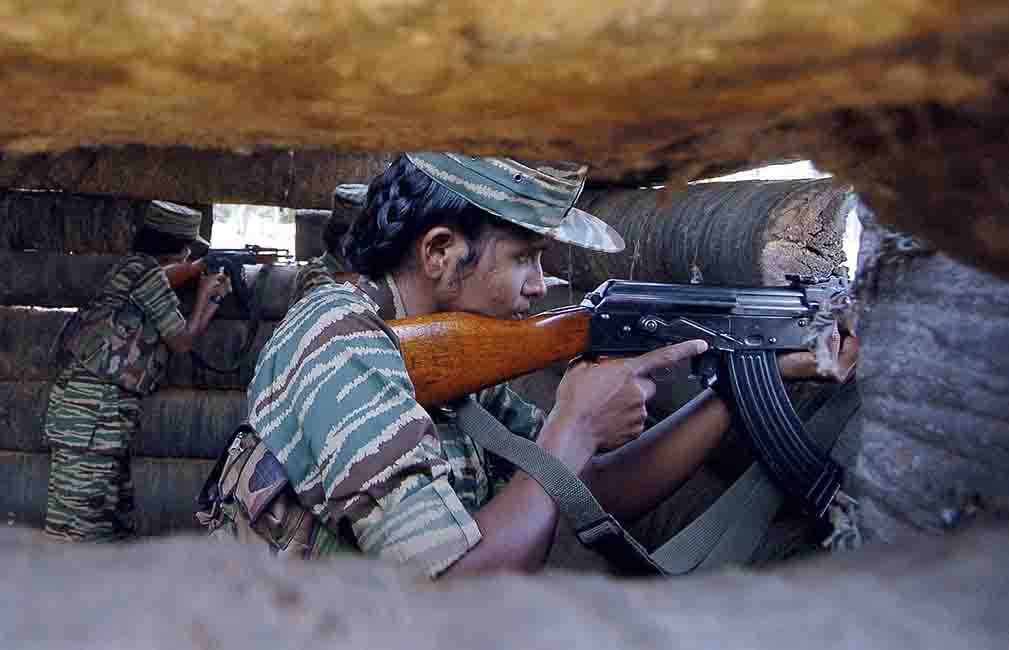
From soldiers to housewives: Women who fought as Tamil Tigers in Sri Lanka are forced into traditional roles
by Holly Robertson
JAFFNA, Sri Lanka — After her release from a rehabilitation camp for former Tamil Tiger fighters in 2011, one former member of the women-only Malathi Brigade was presented by Sri Lankan government officials with a sewing machine.
More accustomed to the rigors of warfare, the woman, who spent seven years fighting with the militant Liberation Tigers of Tamil Eelam (LTTE) after signing up as a teenager, had no interest in sewing. She tried raising chickens, but the venture failed.
“I’m tired of the burden I have become to my family,” said the 35-year-old, who asked not to be identified out of fear of repercussions. “Every time I go out, I have to ask my father for money. I don’t want this kind of life. I would have been a commander in the LTTE by now if it still existed.”
The LTTE’s three-decade campaign for Tamil sovereignty came to a bloody end in May 2009, as government troops crushed an insurgency that had cleaved the Indian Ocean island. Nine years later, the country’s north is picking up the pieces after being shattered by the lengthy war and its violent conclusion — and the women who fought with the rebels have had to navigate a perplexing transition.
Lured by an intoxicating promise of a Tamil homeland and female emancipation, women were recruited to the Tigers in large numbers and made up nearly one-third of the separatist organization.
But once the war ended, most found few options available to them aside from reverting to traditional roles. After years of equality with their male counterparts, they were suddenly expected to marry, have children and tend to household chores.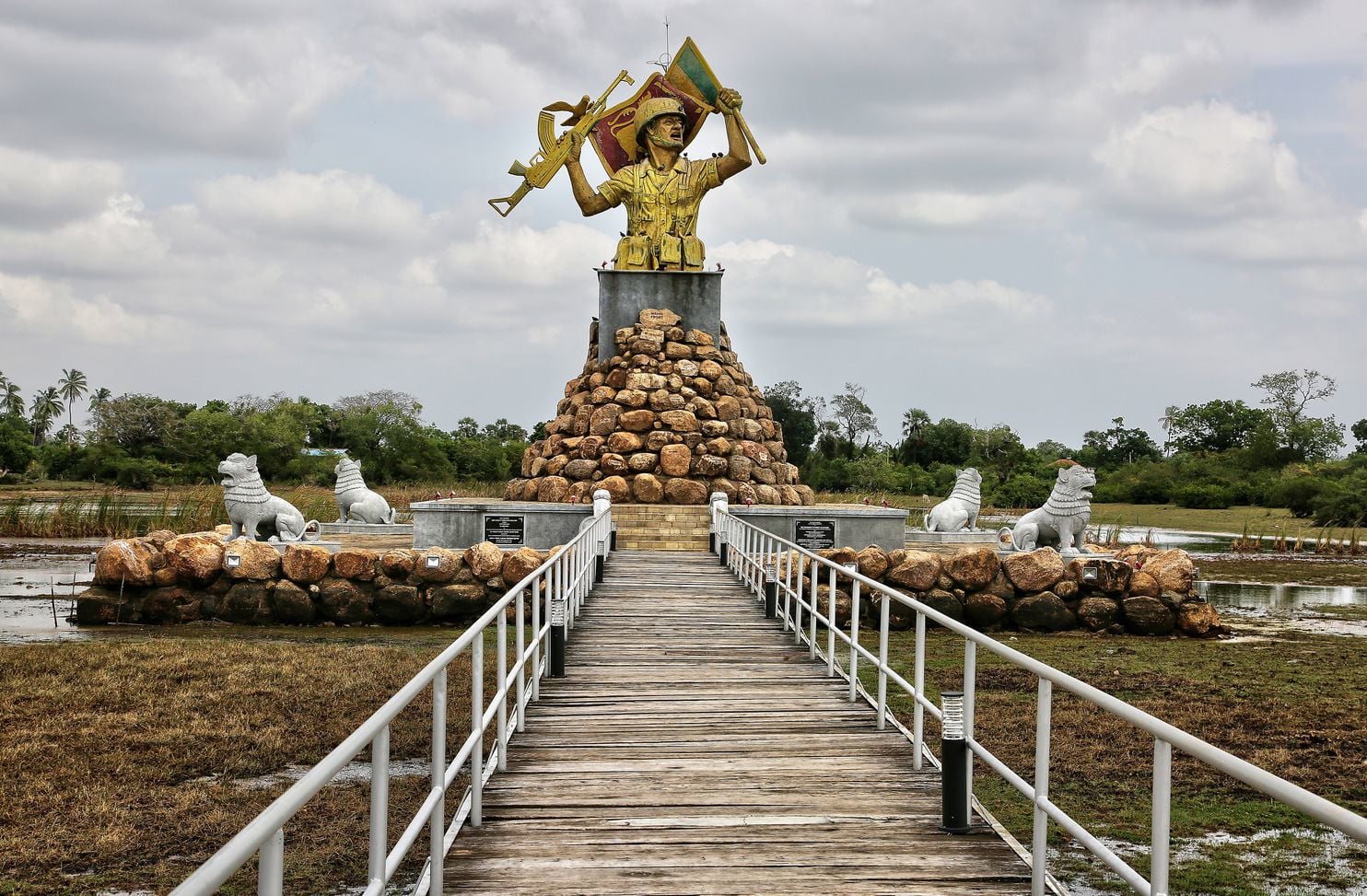
A monument in Puthukkudiyiruppu commemorates the Sri Lankan army's victory over the LTTE. (Creative Touch Imaging Ltd./NurPhoto/Getty Images)
There’s nothing else to do, said a former Sea Tiger — a veteran of the LTTE’s naval division — who also asked not to be identified.
The 39-year-old still has shrapnel peppered throughout her body from battles waged during the 1990s. (She signed up at the age of 12.) She managed to keep from being swept into the system of government-run camps set up to hold the defeated rebels, camps that have been dogged by allegations of torture and rape — and that has enabled her to avoid being placed under surveillance.
“I wanted to start offering karate and self-defense lessons to girls,” she said, “but my husband said, ‘No, don’t do that, it will draw attention to you, and people will start suspecting your background.’ ”
Even today, those who survived the conflict find themselves struggling for acceptance — and a steady income.
Alan Keenan, the International Crisis Group’s senior Sri Lanka analyst, said little has been done to address the basic socioeconomic needs of these female ex-combatants.
“Female fighters have suffered from a range of extra disadvantages — including heightened poverty and vulnerability to sexual exploitation and violence — and the government has developed no comprehensive policy to address these,” he said. “And ex-combatants continue to suffer ostracization from the rest of the Tamil community, for a variety of complicated reasons.”
In their desperate final days, the Tigers alienated many Tamil supporters — who for years had remained loyal to their cause — by forcibly recruiting child soldiers and cynically using civilians as human shields.
The army, for its part, incessantly shelled designated “no-fire zones,” killing thousands and setting the stage for a fraught path to normalizing relations between Tamils and the Sinhalese majority.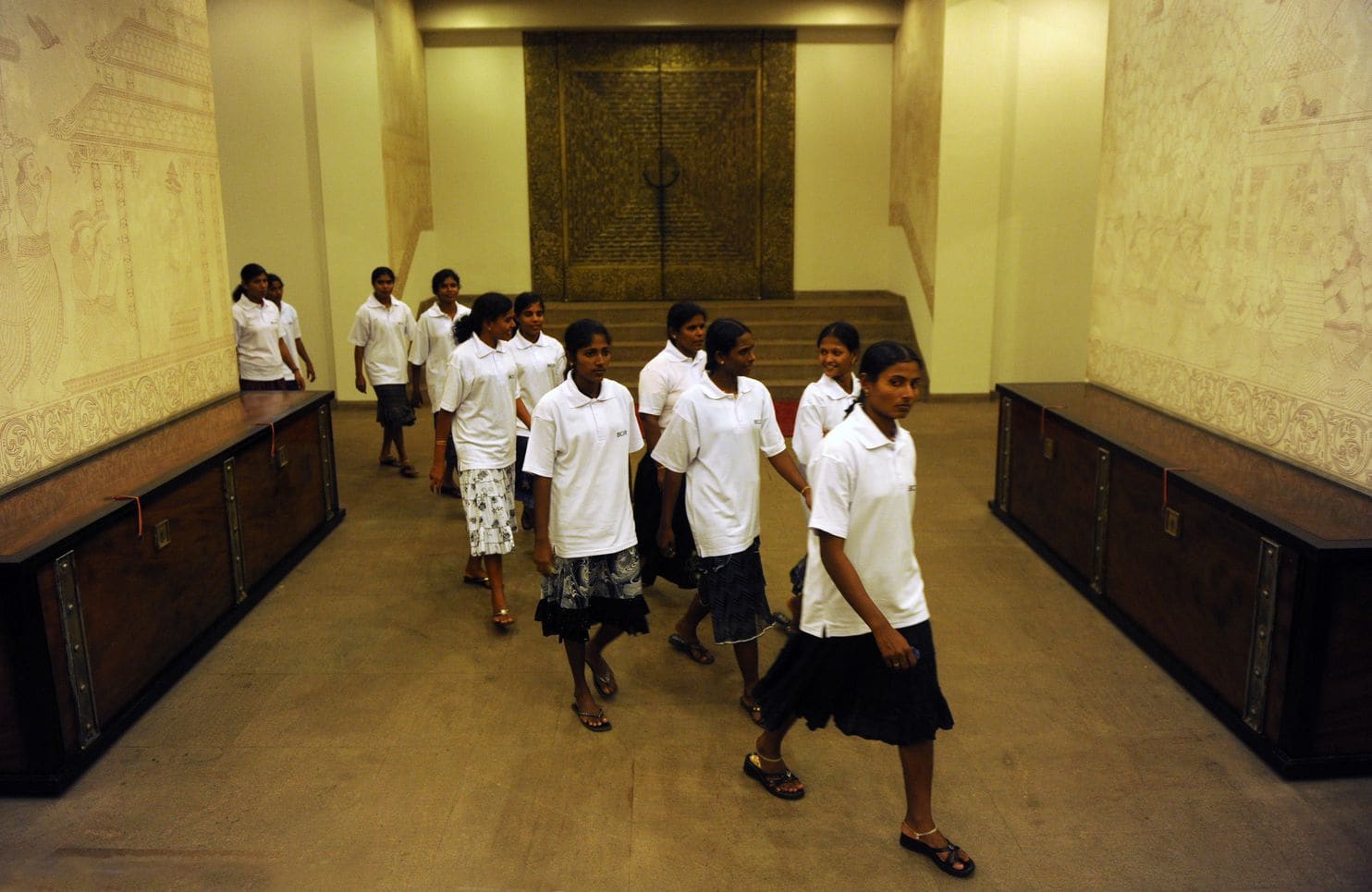
Former Tamil Tiger fighters walk through Sri Lanka's parliament building just outside the capital in 2011. (Ishara S. Kodikara/AFP/Getty Images)
For female LTTE cadres, the defeat marked an end to the militaristic brand of feminism that had earlier liberated them from social strictures. Now they had to swap trousers for saris and grow out their short hair to appease judgmental families and neighbors.
Ananthy Sasitharan, the Northern Province minister for women’s affairs, whose husband was a high-ranking LTTE leader, is one of the few Tamil female politicians and is regularly in contact with former Tigers who come to her for “livelihood assistance.” She said many are living a sparse existence without husbands or jobs and are careful to conceal their ex-combatant status because of continuing state surveillance.
“They dress in a manner so you can’t see that they are injured, but they can’t work much because of that,” Sasitharan said.
Their hidden struggle is illustrative of a society that in many ways remains fractured, although those fractures are masked by torpid reconciliation efforts and a stable economy as the government pushes its ambitious “Vision 2025” to achieve upper-middle-income-country status.
The north saw major postwar infrastructure investment under hard-line former president Mahinda Rajapaksa — who was also responsible for crushing the Tigers. But according to Jehan Perera, executive director of the National Peace Council, local workers were rarely hired for the projects.
Since President Maithripala Sirisena took office in 2015, the government has pulled back on large-scale infrastructure development in favor of housing projects that have had greater success in reaching the general population, Perera said.
“There has been a visible transformation, but the question is whether the benefits are going to the poorer sections of the population,” he said. “The people who are living in the rural areas and villages, or even in the main cities in the informal economy, have not benefited.”
The government has set aside approximately $80 million in its 2018 budget for reconciliation projects, including subsidies for businesses that hire at least five ex-combatants or war widows.
Announcing the budget — the first to contain a section specifically devoted to reconciliation — Finance Minister Mangala Samaraweeratold Parliament that for Sri Lanka to achieve its goal of becoming an advanced economy by 2025, reconciliation is “a must.”
“Despite winning the war, we have yet to win the peace,” he said, “and in order to do so, it is essential that we win the hearts of those in the war-affected areas.”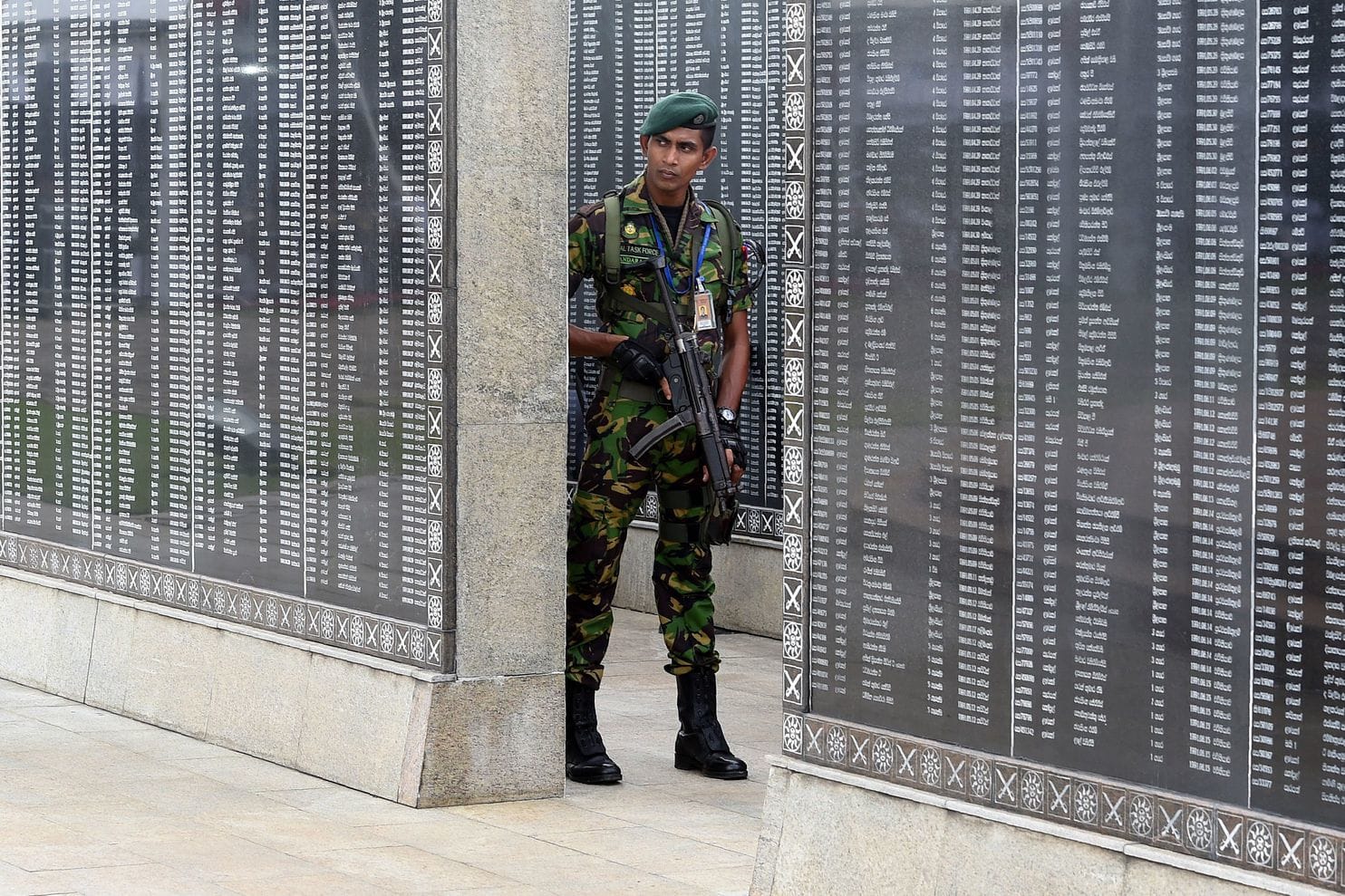
A Sri Lankan soldier stands guard at the memorial for fallen soldiers in the capital, Colombo, during a ceremony marking the ninth anniversary of the end of the island's civil war on May 19. (Ishara S. Kodikara/AFP/Getty Images)
Another ex-Sea Tiger — who joined in 2001, at 16, and spent eight years in and out of the LTTE — moved to a modest home in her new husband’s small village, where she said she is “limited in terms of what she can do as a housewife in this area.”
“I got training in how to make small snacks to sell at shops, and I was doing that, but now I’m feeling too unwell,” said the 33-year-old, who was pregnant and had flesh wounds on her right leg that she said were caused by the shrapnel that remains lodged there. She sustained the injuries after leading a group of female fighters into battle with the army in 2008.
Her husband is disabled, so with the added responsibility, “I don’t feel like the second-in-command,” she said.
Still, she added, “it was very difficult coming into a family setting, as a wife and mother.”
Thulasi Muttulingam contributed to this report.
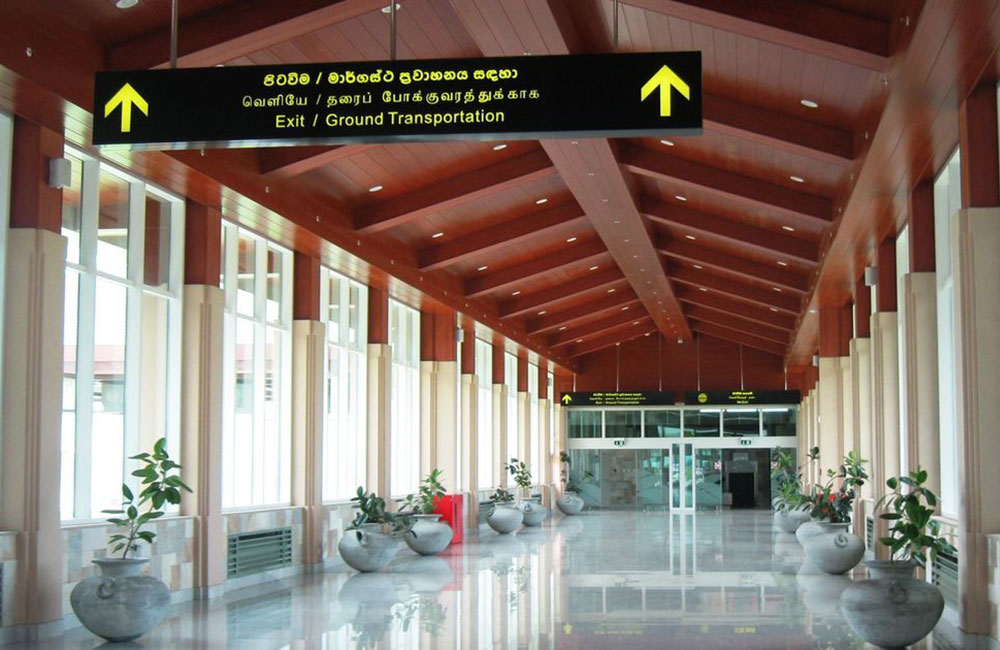
An empty Lankan airport holds promise for India
By Padma Rao Sundarji
In an interview to this writer last year, Sri Lanka’s PM Ranil Wickremesinghe extended some invitations to India. One of them has just reached fruition. For at least 40 years and through a majority stake in a joint venture, India will soon run Mattala, the Sri Lankan airport in the southeastern coastal district of Hambantota. Also known as the Mattala (Mahinda) Rajapaksa International Airport, after the country’s former President and current strongman of Sri Lanka’s Joint Opposition, the terminals threw open their doors in 2013. Five years on, they are still waiting for someone to check in.
Hambantota, 240 km southeast of the Sri Lankan capital, is also home to a controversial, China-built seaport, which, like Mattala airport, has been visited by more journalists than ships so far. Just before I met the PM, I had spoken to angry subsistence farmers and Buddhist monks who were protesting against the decision by Mr Wickremesinghe’s government to hand over the port and an additional 15,000 acres of mostly farmland back to China for 99 years. At the time of the controversial debt-for-equity swap, Sri Lanka owed China $8 billion, one-twelfth of its staggering overall overseas debt.
If it earlier bristled over Chinese submarines “dropping in” on Colombo without prior warning to India, China’s debt-trap stranglehold over Sri Lanka in Hambantota multiplied New Delhi’s concerns tenfold. Yet, Mr Wickremesinghe brushed off India’s worries. “We have always been friendly with China, but not at the expense of India,” he said. “If there is still some uneasiness, it is (because of) the Indian media, that reports from their point of view. There is nothing I can do about it.”
And as if to offer India a head-rub with the island-nation’s famous Siddhalepa pain balm, the PM disclosed plans aimed at inviting India to invest in Sri Lanka. These included Mattala airport.
The airport was built to handle one million passengers, 50,000 tonnes of cargo and 6,250 air traffic operations every year. Earlier this year, it lost its last customer and its hangars are reportedly being used by local farmers to store rice. So, much like the police arriving last at the scene of the crime in a Bollywood flick, why on earth is the otherwise astute and booming economy, India, investing in a dud and that too in southern Sri Lanka, long after China gained the upper hand?
Setting parody aside, it’s not such a dumb idea at all.
Hambantota seaport is firmly in China’s hands. Rumours that Beijing intends it for military use are so persistent that the Sri Lankan Navy is relocating its southern naval command to the region. Mattala airport is just 35 km away. Establishing a presence there will give India the opportunity to literally breathe down China’s neck and monitor its every movement.
There is already close cooperation between the Indian and Sri Lankan navies. The host country, along with Japan and Australia, recently participated in a “humanitarian” naval mission under US command in the seas off Hambantota. China’s string of pearls has not escaped anyone’s notice, least of all that of the United States.
The argument that the small island-nation doesn’t need two international airports overlooks several crucial aspects. Tourism is one of the main revenue-earners for ethereally beautiful Sri Lanka. More than 1.5 lakh visitors arrived in Sri Lanka over the previous year alone and those figures have been on a steady, upward graph.
In the era of terrorism, arrivals and departures by air are the least pleasurable aspects of a holiday. Even when its long-overdue expansion is completed, Colombo airport will remain a fraction of the size of Delhi’s Terminal 3, which, despite its gargantuan proportions, is already overwhelmed by traffic. It’s only a matter of time before tourists in Sri Lanka will yearn for alternatives.
An empty Lankan airport holds promise for India
What do visitors do in Sri Lanka? Given its excellent roads and nationwide tourism infrastructure, most hire a car and traverse the entire country within a week or two, returning to Colombo to depart again. An arrival on one coast and departure from another would save travellers days of precious holiday time.
Consequentially, almost everything points to the fact that if Mattala airport is well marketed and incentivised by Sri Lanka’s tourism authorities, it may well be a commercial success. And even if it isn’t, India’s reported investment of $300 million into the airport will reap other strategic rewards.
Still, even the most sure-footed elephant can stumble, if it focuses only on the juicy fruit above and ignores the rumbling on the ground.
Up to last year, ordinary Sri Lankans were largely upbeat about China’s massive investments in their country. Barely a year later, there is growing resentment over what many see as a “sellout” to China. And as in most small island nations, the growing presence of Chinese expats has exacerbated the fear of a “cultural invasion” too.
India has much to gain from its joint venture in Mattala and other places, but New Delhi would be wise to read the signals. India-bashing is the favourite pastime of all neighbouring countries anyway. And despite the cultural cousinhood between India and Sri Lanka, Sri Lankans are anything but serendipitous about the big neighbour. Historically, India has not endeared itself to Sri Lanka for its dodgy role in first training and later fighting the terror group LTTE, and by Tamil Nadu’s shrill support of Tamil separatism in Sri Lanka.
But the civil war is long over. Of late, Sri Lanka’s majority Buddhists are more concerned about growing Hindu chauvinism over the “Ramayan link” in Sri Lanka. They fear that Indian investment too — especially in Sinhalese-dominated districts — may be a smokescreen for cultural subjugation.
Hambantota is not in Hindu-majority Jaffna. This is the deep, Buddhist-Sinhalese south and — the stronghold of former President Mahinda Rajapaksa, during whose tenure ties with India were in a deep freeze. Though relations between Mr Rajapaksa and India’s ruling BJP have been improving in leaps and bounds, it will take more than one joint venture to convince all Sri Lankans that India’s intentions are honourable.
On top of a promontory overlooking the China-held Hambantota seaport, is the picturesque Gotha Papitha Buddhist monastery. This, along with many other scenic spots, will be swallowed up by China’s Special Economic Zone. As with all big-ticket projects and especially along one of the most spectacular coastlines in the world, real estate vultures will invariably hover: highrise condominiums at spots like the monastery guarantee a killing.
“Yes, Buddhism is a peaceful religion,” chief monk and fierce protester Thera Gotabhaya Amitha told this writer. “But Buddhism’s connection with our people is like a tree and its skin. We will do more than what it takes to resist this port. And if we die? We don’t care.”
Indians are throwing money around on real estate all over the world. If Indian investors do not ignore the temptation to milk the entire area around Mattala airport for profit and insist on lending airport operations a strongly Indian, instead of Sri Lankan identity, they will meet the wrath of tens of thousands of such protesters across Sri Lankan political party lines.
But if India plays the sensitive friend and not the bully big brother, its arrival in Sinhalese-dominated southern Sri Lanka could be the beginning of a beautiful friendship.
*The writer is a senior foreign correspondent and the author of Sri Lanka: The New Country. A version of this article was first published in the Asian Age.

Sri Lanka Big Bad Wolf book sale from 28th June – 8 July
The 24-hour book sale returns to Sri Lanka with over 1.5 million books at 60%-80% discounts this 28 June – 8 July
The Big Bad Wolf Book Sale announced its return to Sri Lanka today at a press conference held at Park Street Mews, Colombo. Known as the world’s biggest book sale, the Big Bad Wolf Book Sale is set to opento the public from 28 June until 8 July 2018 at the Sri Lanka Exhibition and Convention Centre (SLECC) with 1.5 million books at 60%-80% discounts. Book lovers can enjoy 255 hours of non-stop book shopping at the Sale, which will be open 24 hours a day throughout the 11 days of the event.
Selected invitees will have the chance to attend a special preview of the Sale on 27 June from 10.00am – 11.00pm, a day before it opens to the public. Visitors can win preview passes through contests on the Big Bad Wolf Facebook pageand through their media partners.
The media launch saw the attendance of Andrew Yap, Founder and Managing Director of Big Bad Wolf Books, Dipak Madhavan, Partner of Big Bad Wolf Books and Nishan Wasalathanthri, Director of ProRead Lanka (Pvt) Ltd. The event is supported by The Ministry of Education of Sri Lanka. Event partner for the event includes, Bank of Ceylon – the official banking partner, Mobitel – the official telco partner, and The Capital Maharaja Organisation Limited.
“We are truly excited to be back in Sri Lanka with an even bigger and better book sale this year. Last year’s event was a huge success and an eye-opener on how enthusiastic Sri Lankans are for good quality, affordable English books. We’ll be bringing over a wider range of titlesforbook lovers in Sri Lanka this time around,” shared Andrew Yap. “We are grateful to our partners and other organisations who have pledged their support to empower Sri Lankans with more English learning opportunities.”
Speaking at the event was also Big Bad Wolf Books’ local partner, Director of ProRead Lanka (Pvt.) Ltd, Nishan Wasalathanthri. “We are pleased to bring the Sale back to Sri Lanka for the second time.Last year was the first time a book sale of this scale had ever been held at Sri Lanka and we pulled off an unforgettable event. We invite people of all ages to visit the Big Bad Wolf Book Sale this time around for an even bigger and better experience,” said Nishan Wasalathanthri.
Held in October last year, the Sale is returning earlier this year in June, much to the joy of eager readers. Readers can expect to find over 1.5 million new English books, ranging from fiction, bestsellers, literature, non-fiction, business books, cookbooks, art and design, coffee table books and more, priced at 60%-80% off regular retail prices.
Parents can also expect an extensive collection of children’s books, including bedtime stories, colouring and activity books, educational books and interactive books, all at 60%-80% bargains.
“We anticipated a high demand for children’s books last year, but we were surprised tofind out that there was also an enormous demand for fiction titles, which flew off the shelves. We’ll be bringing over an exciting variety of fiction books and bestsellers to meet the demand of readers this year,” said Dipak Madhavan.
In an aim to make affordable English books available to all, Big Bad Wolf Books will also be giving books to communities in need through their Red Readerhood programme, supporting the The Capital Maharaja Organisation Limited’s Gammadda initiative. Customers can participate in this worthy initiative by purchasing books at the Sale and donating them at the Red Readerhood booth.
As part of another initiative to advocate greater English literacy among people of Sri Lanka, Big Bad Wolf Books will be working with the Ministry of Education to provide local O/L top scorers with an opportunity to visit the international book sale. Last year, Big Bad Wolf Books invited top scholarship scorers from flood-stricken areas to the Sale and provided them with a trolley full of books to take home.
Book lovers will also stand a chance to nab limited edition books, exclusive Big Bad Wolf t-shirts and collector’s items at the Sale.Starting this year, they can collect official Big Bad Wolf shopping bags at the Sale, with the introduction of limited edition reusable cloth bags to replace plastic bags in a commitment towards sustainability. Hungry readers can also enjoy a variety of meals and snacks at the outdoor food court that is powered by uPay, organised by Hisham Cader of The Sandwich Factory.
Source : LBO

Rajapaksa presidential stakes in deep waters
Former President Mahinda Rajapaksa- though unable to run for President in 2020- found himself at the centre of an evolving controversy last week as the respected American newspaper the New York Times implied in an article that China has inveigled Sri Lanka into a ‘debt trap’ during Rajapaksa’s Presidency.
The article in question was titled ‘How China got Sri Lanka to cough up a port’ and was written by Maria Abi-Habib, the newspaper’s South Asia correspondent based in New Delhi. The article appeared in the New York Times on June 25 and acknowledges contributions from journalists from Beijing as well as two senior journalists in Sri Lanka.
While the New York Times has an established reputation as a newspaper of integrity, Abi-Habib also has impressive credentials. Among other achievements, in 2012 she investigated atrocities in a military hospital in Kabul in Afghanistan that led to the resignation of an American General.
The article paints a picture of Sri Lanka as a “small country hungry for financing”. It claims that China offered loans to Sri Lanka that could not be sustained to build the port in Hambantota and that, as a result, “under heavy pressure and after months of negotiations with the Chinese the government handed over the port and 15,000 acres of land around it for 99 years in December”.
The article claims that the port “gave China control of territory just a few hundred miles off the shores of a rival, India, and a strategic foothold along a critical commercial and military waterway” and observes that “the case is one of the most vivid examples of China’s ambitious use of loans and aid to gain influence around the world”.
More damaging for Rajapaksa is the claim that engagement with the Chinese was linked to his election campaign. The article claims that “during the 2015 Sri Lankan elections, large payments from the Chinese port construction fund flowed directly to campaign aides and activities for Mr. Rajapaksa, who had agreed to Chinese terms at every turn and was seen as an important ally in China’s efforts to tilt influence away from India in South Asia”.
Hambantota Port
The newspaper states that “the payments were confirmed by documents and cash checks detailed in a government investigation seen by The New York Times”. It also notes that “Rajapaksa and his aides did not respond to multiple requests for comment, made over several months, for this article. Officials for China Harbor (the company engaged in the construction of the port) also would not comment”.
The decision of the Rajapaksa government to build a port in Hambantota could be criticised as bad judgment, because the port- like the airport in Mattala- has not been a commercial success. However, of more concern to Rajapaksa, the Joint Opposition (JO) and the Sri Lanka Podujana Peramuna (SLPP) is the insinuation that this decision was quid pro quo for funding provided to Rajapaksa for his 2015 presidential election campaign.
The article does provide details about this, which, if accurate, would be of concern. “At least US$7.6 million was dispensed from China Harbor’s account at Standard Chartered Bank to affiliates of Mr. Rajapaksa’s campaign, according to a document, seen by The Times” the article claims.
“With 10 days to go before polls opened, around US$3.7 million was distributed in checks: US$678,000 to print campaign T-shirts and other promotional material and US$297,000 to buy supporters gifts, including women’s saris. Another US$38,000 was paid to a popular Buddhist monk who was supporting Mr. Rajapaksa’s electoral bid, while two checks totalling US$1.7 million were delivered by volunteers to Temple Trees, his official residence,” the article claims.
This is hardly the kind of publicity that the Rajapaksa camp would wish for, with presidential elections due in eighteen months, even if Mahinda Rajapaksa is himself not a candidate. Predictably, the government- or at least, its United National Party (UNP) faction- has gone on the offensive.
Social Empowerment Deputy Minister Ranjan Ramanayake has lodged a complaint with the Financial Crimes Investigation Division (FCID) regarding the allegations made in the New York Times article and State Minister of Power and Renewable Energy, Ajith Perera has challenged Rajapaksa to sue the newspaper if the article was defamatory.
Initially, Parliamentarian Namal Rajapaksa, eldest son of the former President pooh-poohed the accusations in the article stating that the New York Times was simply recycling old allegations. However, it was clear that the controversy was gathering momentum and Mahinda Rajapaksa did respond.
Rajapaksa denied the allegations and stated that he was in the process of sending a Letter of Demand to the New York Times. He also said that his party would also be doing the same as the article stated that his party’s campaign was funded by China. However, Rajapaksa did not specify which political party that was because he ran as a candidate of the United Peoples’ Freedom Alliance (UPFA) which he is no longer in control of.
Rajapaksa also issued a detailed statement. “No contribution was made by China Harbour Co to my 2015 presidential election campaign. While claiming that my ‘affiliates’ and ‘campaign aides’ had got the money and that ‘volunteers’ had delivered the cheques to Temple Trees, the writer of the New York Times article has been intentionally vague about who had given this money and who had received it. This seems to be a way of carrying out a smear campaign without incurring any liability”, Rajapaksa said in his statement.
Denial
Rajapaksa also takes issue with the New York Times for the sources of its information. “The NYT writer has stated that they had obtained some of the details in that article from a Sri Lankan ‘government investigation’. Every Sri Lankan knows that the main preoccupation of this government since it came into power has been to sling mud at the opposition” he says.
Despite this rebuttal, the controversy continues, in part due to the tactics adopted by the Rajapaksa camp. This was after JO parliamentarians held a news conference and claimed that the two senior Sri Lankan journalists who have been acknowledged in the article made their contributions at the behest of the government. A photograph of one of the journalists was also displayed at the briefing.
This was to draw a sharp retort from the New York Times. Michael Slackman, the international editor for The Times, called those claims false. In a statement, he said The Times article was rigorously reported and accurate and criticized the JO’s tactics. “It is unacceptable for journalists to be intimidated in this way,” Slackman said. “This action appears intended to silence critics and curb press freedoms, and ultimately deprive Sri Lankans of information in the public interest.”
Meanwhile, the Chinese embassy in Colombo has also now weighed in with its own statement on the issue. The statement from the embassy however does little to clear up the controversy. “The embassy has noticed the New York Times’ article published on June 25, as well as the clarifications and responses by various parties from Sri Lanka, criticizing it full of political prejudice and completely inconsistent with the facts” the statement said. The embassy statement notes that “despite any interference from a third party, China would like to work together with Sri Lanka to actively implement the important consensus reached by the leaders of the two countries” but is silent on the specific allegations levelled in the article.
It is very likely that, fuelled by political pressures, this issue will linger on for some time. Whether the Rajapaksa camp has the nous to take on the New York Times on this matter is a moot point. That is because, publicity of this kind is something that the Rajapaksa, the JO and the SLPP could best do without with national elections on the horizon. At present, however, strategists in that camp don’t seem to view this controversy in that light.
Source : Daily News - Lakdev Liyanagama
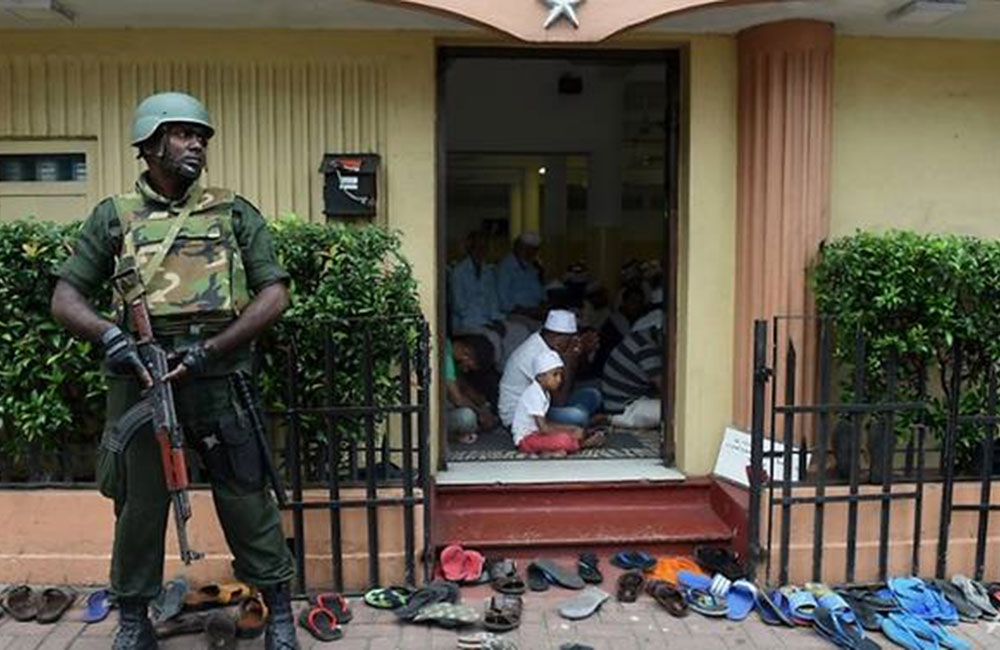
Facebook staff to learn Sinhala insults after Sri Lanka riots
Three months after Sri Lanka was rocked by deadly anti-Muslim riots fuelled by online vitriol, Facebook is training its staff to identify inflammatory content in the country's local languages.
The social network has been seeking penance in Sri Lanka after authorities blocked Facebook in March as incendiary posts by Buddhist hardliners fanned religious violence that left three people dead and reduced hundreds of mosques, homes and businesses to ashes.
Until the week-long ban, appeals to Facebook to act against the contagion of hate speech had been met with deafening silence, at a time when the California-based tech giant was reeling from unprecedented global scrutiny over fake news and user privacy.
"We did make mistakes and we were slow," Facebook spokeswoman Amrit Ahuja told AFP in Colombo.
The dearth of staff fluent in Sinhala - the language spoken by Sri Lanka's largest ethnic group - compounded the issue, with government officials and activists saying the oversight allowed extremist content to flourish undetected on the platform.
Ahuja said Facebook was committed to hiring more Sinhala speakers but declined to say how many were currently employed in Sri Lanka.
"This is the problem we are trying to address with Facebook. They need more Sinhala resources", said the island's telecommunications minister Harin Fernando.
Since the violence broke out in March, two high-level delegations from the company have visited Sri Lanka, where ethnic divisions linger after decades of war, to assure the government of its intent.
Ahuja said Facebook was working with civil society organisations to familiarise its staff with Sinhala slurs and racist epithets.
Complex local nuances have added to the challenge. The word for "brother" in Tamil - also an official language in the country - can be a derogatory term in Sinhala when a slight inflection is used.
DESPERATE MEASURES
Fernando said the decision to impose an island-wide blackout on Facebook - used by one in three Sri Lankans - was taken as a last resort to prevent an escalation of violence.
Buddhist monks freely shared images of masked men attacking mosques and urged others to do the same in the weeks before the riots erupted in Kandy.
Sinhala extremists used the social network to recruit rioters and organise their travel to the troubled area, from where violence later spread.
A meme in Sinhala, which remained online for weeks, urged death to all Muslims, including children.
A man who reported it to Facebook was told it did not violate "specific community standards".
In addition to government warnings, Fernando told AFP that Facebook users lodged thousands of complaints over extremist content, but were met with silence.
"It was not something that I liked doing. But if we didn't block Facebook, the violence would have spread out of control," he said.
Eventually the army was given special powers to restore order under the first state of emergency declared in the 21-million-strong nation since the end of the civil war in 2009.
"ACTION NEEDED"
Ahuja said Facebook has since taken down "hate figures and organisations" in Sri Lanka including the Bodu Bala Sena, a radical Buddhist outfit that is blamed for attacks against Muslims in recent years.
Its spokesman Dilantha Withanage complained the group and its leader - the notorious extremist monk Galagoda Aththe Gnanasara - were being unfairly targeted.
"We can't even post a photo of venerable Gnanasara on Facebook," Withanage told AFP.
But videos of his sermons can still be seen on the social network. Other extremists have also slipped through the cracks, activists say, despite repeated requests to have their accounts removed.
Last year another extremist Buddhist group, Sinhale Jathika Balamuluwa, urged followers via Facebook Live to storm a UN compound sheltering Rohingya Muslims. Police had to be called in to protect the refugees from the mob.
Several Facebook pages for the group have been blocked in Sri Lanka but the same content can be viewed under alternate names, activists say.
"Facebook is only now being held to account over things that since 2013 were evident...(to) us," said Sanjana Hattotuwa, a researcher who has studied Islamophobia on Facebook in Sri Lanka.
Sri Lanka's Centre for Policy Alternatives said Facebook needed to offer more than "cookie cutter" pledges to clean up its act.
"The time for promises has passed. Action is what's needed, and transparency and accountability," said Hattotuwa.
Featured : Channel News Asia
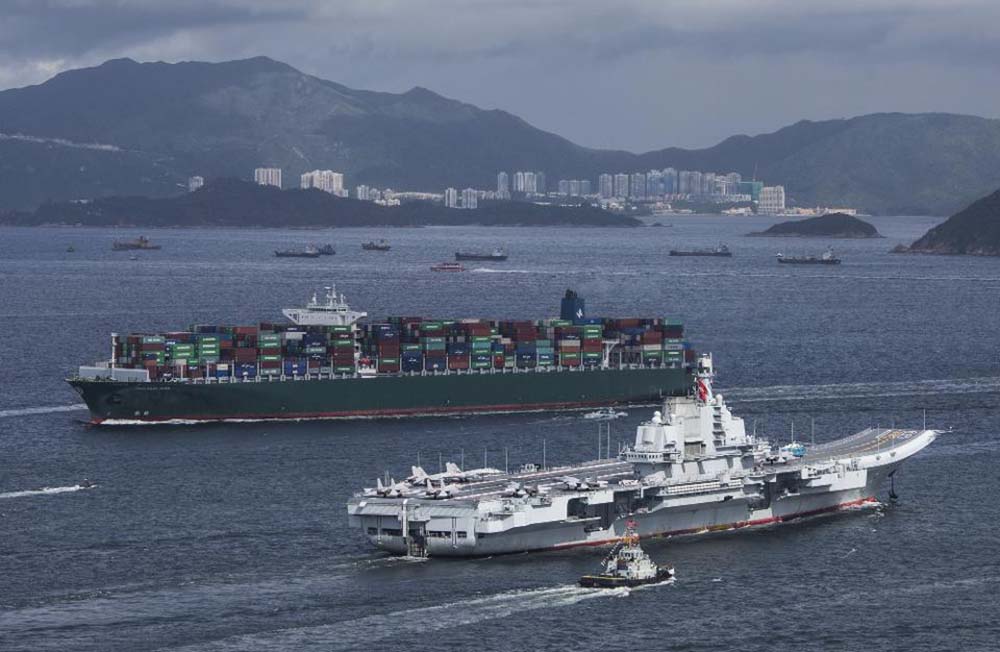
China Is Doing The Same Things To Sri Lanka Great Britain Did To China After The Opium Wars
By Panos Mourdoukoutas
(Forbes) - China is turning Sri Lanka into a modern day “semi-colony,” the same way Great Britain and Portugal turned south China into their own semi-colonies back in the mid of 19th century.
Sri Lanka didn’t lose a war to China. It never ceded any of its territory officially to China. But it handed over economic control of its deep sea Hambantota port to China Merchants Port Holdings (CM Port).
Last week, CM Port made a $584 million payment as part of a $1.12 billion deal to operate Sri Lanka’s deep-sea Hambantota port, according to a Reuters report. Under the agreement, signed in July 2017, CM Port will run the $1.5 billion Chinese-built port on a 99-year lease.
The $1.12 billion total price is to be used to reduce the Sri Lankan government’s debt to China.
In economic terms, this agreement is similar to that China signed back in the aftermath of Opium Wars with the British and the Portuguese, ceding control of its Southern ports to the British and the Portuguese.
China's growing presence in Sri Lanka began back in 2007, when Beijing provided President Rajapaksa both military and diplomatic support to crush the Tamil Tigers. Then followed high profile construction projects and high interest loans that left Sri Lanka heavily indebted to China.
Sri Lanka government debt was standing 77.60% of the country's GDP in 2017, well above the 69.69% average for the 1950-2017 period, according to Tradingeconomics.
Meanwhile, Sri Lanka’s Government Budget deficit stands at 5.5% of the country’s GDP, adding to its indebtedness.
Rising indebtedness comes at a time when Sri Lanka is already living beyond its means, as evidenced by persistent current account deficits, which stand at 2.60% of the country's GDP in 2017.
To cope with a rising debt to China, Sri Lanka has signed agreements with China that swap loans for equity, transforming China into an owner to major infrastructure projects like Sri Lanka’s major port— and a key outpost in the Indian Ocean for Beijing.
This development has irked India, which is slowly becoming encircled by China; and India’s allies that are concerned about China’s aggressive moves to control maritime trade from the South China Sea to the Indian Ocean.
That’s something investors in Southeast Asian markets should keep a wary eye on, as it opens yet another front between the two Asian giants, raising the geopolitical risk of investing in the region.
Markets, for the time being, seem to be ignoring these risks.
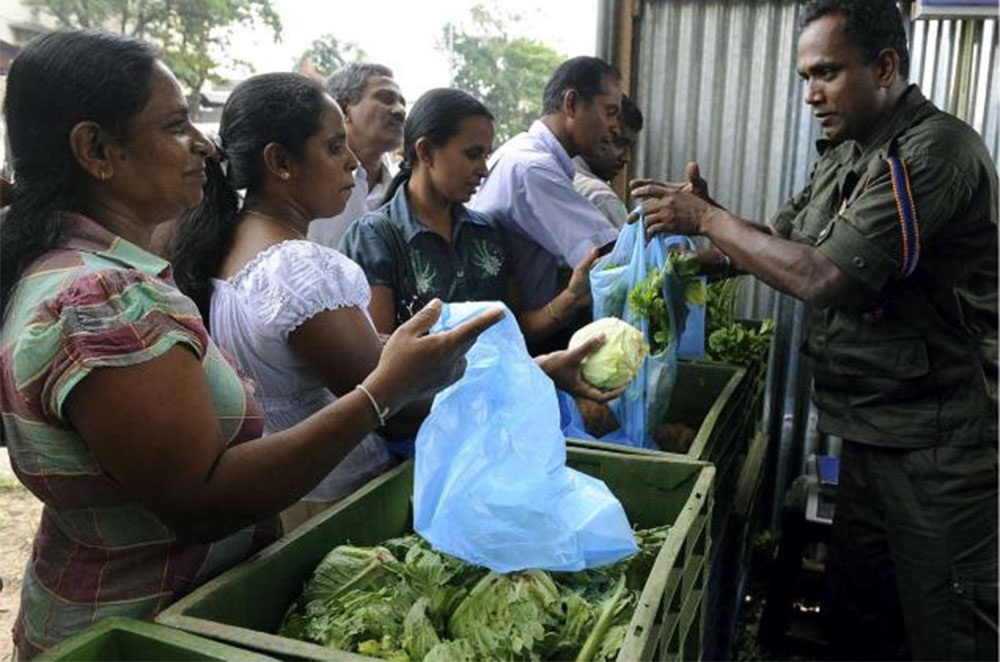
Economic Disparity and Nationalism – Part 3
By Dr. Lionel Bopage
Far right in Europe
Throughout Europe, racialist groups have used the war on terror to create new racist mono-cultural political platforms. With the collapse of the Soviet bloc in the nineties, uncertainty reigned for some time as free markets expanded and some aspects of bourgeois democratic institutions were established. A neo-liberal social development model started expanding horizontally sweeping through Central and Eastern Europe and was accompanied by structural reforms of economic liberalisation and globalisation.
A quarter century later, right wing populist currents gained ground in Hungary and Poland and then spread into France, the Netherlands and the United Kingdom. In the past decade, new right-wing movements have developed into coalitions between Neo-Nazis and the free-market advocates. In a way, this has brought a superficial normalcy to the right wing fascist ideologies in some parts of Europe and they have even gained more electoral grounds. In countries like Poland and Hungary, such right-wing forces are in power. They used national security as a political platform for introducing racism and introduced systemic intolerance by restructuring education, immigration, and the judiciary.
In Italy, a populist anti-establishment Five Star Movement (M5S) that contested the March 2018 Parliamentary elections under the slogan “Participate, Choose, Change” and a regionalist populist League that contested under the slogan “Italians First” formed an alliance this month to form government. The election environment also focused on the apparently irreversible decline of economy, persistent high unemployment and corruption. The campaign of M5S was focussed on anti-corruption and a proposed Universal Basic Income (UBI) for all. The League was an anti-immigrant and anti-EU party like the National Front in France or United Kingdom Independence Party (UKIP) in Britain. It was formerly a separatist party that campaigned for autonomy of Padania, the richer northern parts of Italy.
In many instances, Islamic terror attacks and threats have been used to bolster surveillance and deportation with the tightening of search, arrest, detention and judicial oversight and restraints on ‘suspects’. Young people of colour are increasingly subjected to surveillance and are put on suspect lists and vilified. Immigrants and asylum seekers are threatened and deported even for minor offences. Non- white immigration appears to have been made into a deportable package with their human and democratic rights as citizens being scrapped. Some of the migrants, who do not fall within the scope of the dominant ethnicity or the reigning political ideology, and depending on their race, class, religion, immigration status, pre-internments and political beliefs, have no guarantees of their fundamental rights as citizens.
The right-wing political network advocates border protection, national purity and religious intolerance whatever the cost to life and social cohesion is. Internationally funded human right defenders are demonised as foreign agents; feminists and pro-immigration advocates are censored; offices of political parties, unions and other groups that are critical of the existing regimes are raided and their property detained; civilians and asylum seekers fleeing civil wars and persecution have their freedom of movement curtailed and held under conditions similar to rendition in overseas detention centres. Border protection through patrolled trenches, barbed wire fences and parapets and returning of boats have become the norm in many countries, especially in the west.
New right-wing groups such as neo-fascists openly advocate monoculturalism and hate crimes and maintain odious social media pages, take part in elections, hijack public space and maintain links with vigilante groups. Some patrol their suburbs, threaten business activities of immigrants, harass women wearing hijabs and pick fights at rallies. For example, in Greece, members of Golden Dawn attacked immigrant street market vendors. In Hungary and Bulgaria vigilante border guards target migrants. In others, they openly threaten Jewish communities.
Many extreme right-wing parties and far right groups such as the Front National (FN) of France, the Alleanza Nationale (AN) of Italy, the British National Party (BNP) of the United Kingdom, and the Austrian Freedom Party (FPO) of Austria operate within the countries of the European Union. In France, Jean-Marie Le Pen, the previous leader of the Front National (FN) once said, “1 million unemployed - this means 1 million foreigners too many.” Currently her grouping - European Union wide called the Europe of Nations and Freedom (ENF) is engaged in a continent wide anti-immigration campaign supported by many far-right leaders of Austria, Netherlands, Czech Republic and Italy. This group hopes to win a majority of seats in the European Parliament during the European Parliamentary elections to be held in May 2019.
The far right shares many ideological beliefs with fascism. They believe the issue affecting their nations is immigration with immigrants taking up their jobs. Despite there being no evidence to support their harmful contentions, they want to advance their nationalist agenda by getting rid of immigration except for some. Many of them believe that immigrants commit crimes against them and that immigrants misappropriate welfare benefits that should flow to citizens of their countries. They allege immigrants destroy their national cultures by protecting their own customs and traditions. They want immigrants to adopt the customs and traditions of their host countries. They believe by getting rid of the immigrants, they can stop the ‘cultural erosion’ of the respective nation states.
Such tensions have given rise to national resentment, which enables the rise of fascism. The national resentment directed towards immigrants appear to be caused by a combination of indignation and fear of the future. However, this national resentment by itself is not a sufficient condition to engender fascism. When these circumstances blend with a weak, democracy, it becomes the perfect political breeding ground for fascism to raise its ugly head.
Far Right in Australia
In Australia, the left is considered to have collapsed in 1975 with the toppling of Labor government of Prime Minister Gough Whitlam. Since then the Australian Labour Party began pursuing economic rationalism with a social democratic façade. However, the right-wing neo-liberal, conservative racialist ideologues continue to foreshadow possible threats from the “far-left” when one talks about the rising cost of living, static wages, crimes and inhumane treatment against asylum seekers. The dominant media and conservative groups continue to launch tirades against a non-existing “far left”. So, when someone is talking about looking after the other compassionately rather than focusing on showering the millionaires at the expense of the poor, that person is branded as a leftie.
Australia’s far-right groups have steadfastly carried out propaganda campaigns of vilification and demonization of communities such as Jews, LGBTIQ people, Muslims and non-European immigrants, particularly Asians and Africans. Some far right anti-Islamic individuals and groups have united with the rallying cry against Islamist terrorism, Muslim immigration and the “Islamisation of Australia”. These groups with diverse objectives based on race and culture have coalesced into online movements and militant localised streams. They can be broadly categorised into three main streams: civic patriots, nationalists and racialists.
To be continued …

Advancing An Unfinished Agenda – Sri Lanka's Reconciliation Process
By S. Binodkumar Singh
On June 13, 2018, the Sri Lankan Cabinet ratified the Office for Reparations Bill to be enacted by Parliament for the payment of reparations to war-affected and missing persons. However, there was resistance within the Cabinet against the proposed reparation formula, which includes benefits to families of former Liberation Tigers of Tamil Eelam (LTTE) combatants. The formula had been worked out by the Rehabilitation, Resettlement and Hindu Religious Affairs Minister D.M. Swaminathan. Minister of Megapolis and Western Development Patali Champika Ranawaka opposed benefits being provided to families of ex-LTTE cadres.
A fresh Cabinet memorandum seeking grant of compensation to war-affected people including ex-LTTE combatants was submitted on June 19, 2018. However, the Cabinet withheld its approval for the compensation formula till the establishment of the reparation office after enacting necessary legislation, as Ranawaka again raised objections. Similarly, opposing the move to pay compensation to ex-LTTE combatants, Joint Opposition member Wimal Weerawansa on June 20, 2018, demanded, “Why is the Government trying to compensate terrorists who tried to destroy our country? If the Government is attempting to compensate the terrorists who struggled for Tamil Eelam, we are forced to consider the President and the Prime Minister as separatists.”
Meanwhile, responding to Weerawansa, United National Party (UNP) Colombo District Member of Parliament (MP) Mujibur Rahuman on June 21, 2018, argued that the much debated Cabinet Paper submitted by Resettlement and Rehabilitation Minister D.M. Swaminathan seeking to grant compensation to war affected persons including ex-LTTE combatants consisted of some of the recommendations of the Lessons Learnt and Reconciliation Commission (LLRC) Report submitted on November 15, 2011, to the former President Mahinda Rajapaksa. Rahuman further said that ex-LTTE combatants were also citizens of this country and had a right to lead normal lives without any restriction or monitoring after completing the rehabilitation process.
The Office for Reparations is one of the four transitional justice mechanisms to address ‘truth, reconciliation, accountability and non-recurrence’ prescribed by the United Nations Human Rights Council (UNHRC) Resolution, co-sponsored by Sri Lanka on October 1, 2015. Of the four mechanisms, Sri Lanka operationalized the Office for Missing Persons (OMP) on March 13, 2018, a special office set up for determining the status of all persons who went ‘missing’ during the brutal civil war. The Office for Reparations is the second mechanism now expected to be set up. These will be followed by a ‘truth-seeking commission’ and a special court with independent counsel.
Earlier, reconfirming Sri Lanka’s commitment to implementing the UNHRC Resolution, Mano Tittawella, Secretary of the Secretariat for Coordinating Reconciliation Mechanisms (SCRM), while addressing the International Conference on Reparation, “Moving from a Divided Past to a Shared Future”, organized by the SCRM and International Organization for Migration (IOM), the UN Migration Agency, stated on February 22, 2018, “The conference follows the UNHRC Resolution on Sri Lanka and a Government decision to actively promote reconciliation, including a system of victim reparations, that will contribute to a lasting peace.” This was the first such conference to be held in Sri Lanka since the conclusion of the Eelam War on May 17, 2009.
The OMP was operationalized on March 13, 2018. In its first outreach meeting held at the Mannar District Secretariat, which was attended by about 250 people, on May 12, 2018, OMP Chairman Saliya Peiris elaborated,
In the second OMP public meeting held at the Matara District Secretariat, attended by about 150 persons on May 19, 2018, Peiris disclosed that OMP would set up 12 regional offices in Jaffna, Kilinochchi, Mannar, Batticaloa, Trincomalee, Ampara, Mullaitivu, Vavuniya, Matara, Kurunegala, Moneragala and Kandy, in order to expand its services and to receive information and complaints about the missing persons.
In the third session of consultations with families of the disappeared at the Mullaitivu Divisional Secretariat on June 2, 2018, OMP Commissioners held consultations in two sessions the first for families from Puthukuduyirripu and Maritime Pattu, and the second for families from Thunukkai, Manthai East, Weli Oya and Oddusudan. OMP met with civil society organizations as well. Several families raised concerns about the list of surrendered militants at the end of the war, which the Government had earlier promised to obtain from the security establishment.
To promote the Government’s reconciliation programme, a ‘Reconciliation Channel,’ a new Tamil language TV channel under the Sri Lanka Rupavahini Corporation (SLRC) was launched on February 20, 2018, presided over by President Maithripala Sirisena. The Channel has programmes catering to Tamil speaking people and showcase items that reflect their religious, national and cultural identities. Separately, to improve the quality of education in Jaffna, Prime Minister Ranil Wickremesinghe announced on March 28, 2018, that a 10-year-plan will be implemented in Jaffna. The Prime Minister instructed Education Minister Akila Viraj Kariyawasam to take necessary measures to implement the 10-year-plan with the assistance of Northern Province Education to improve the quality of education in Jaffna District.
Meanwhile, to extend civil-military cooperation, in a meeting between Northern Province Chief Minister Canagasabapathy Viswalingam Wigneswaran and the Commander of the Sri Lanka Army, Lieutenant General Mahesh Senanayake at the Chief Minister’s Office in Nallur, Jaffna District, on March 29, 2018, the Army offered its assistance to the Northern Province to resolve vital issues pertaining to development and the livelihood of the community. During the meeting, the Army Commander pointed out to the Chief Minister that the Army was capable of providing leadership for school cadetting programs if the provincial department of education sought such assistance. The Army Chief also offered his assistance to resolve issues relating to the fishing community. The Commander also emphasized that the Army’s potential was available at all times for civil-military cooperation.
Further, to discuss the implementation of projects in the Northern Province, Minister of Finance and Mass Media Mangala Samaraweera, accompanied by Central Bank Governor Indrajit Coomaraswamy and Finance Secretary Dr. R.H.S. Samaratunga on March 30, 2018, met with the Chief Minister of the Northern Province, Canagasabapathy Viswalingam Wigneswaran. During discussions, the officials considered possible projects to best use the SLR one billion allocated for the five Districts in the Northern Province. The District Secretaries of the five Districts also participated in the discussion.
Significantly, to inspect the progress of development projects launched in the Northern Province, Prime Minister Ranil Wickremesinghe made a tour in the Northern Province on May 28, 2018. Participating in the progress review meeting at the Kilinochchi District Secretariat, the Premier emphasized that measures should be taken to increase economic production, aiming at improving the quality of life of the people. On June 14, 2018, the President’s Media Division announced that a Presidential Task Force had been appointed to operate development programs in the North and East. Headed by President Maithripala Sirisena, the task force will be responsible for coordination and follow up of all development programs in the Northern and Eastern Provinces. The Prime Minister, Provincial Governors, Chief Secretaries of the two Provincial Councils, top military and Police officials and representatives of all relevant factions are included in the task force.
Expressing satisfaction on the progress of Sri Lanka’s reconciliation process and the measures taken by the Government, UN Under-Secretary General for Political Affairs Jeffrey Feltman, concluding a three-day visit to Sri Lanka on March 11, 2018, commended the Parliament’s adoption of the Bill for the Protection Against Enforced Disappearances as an important element of the Sri Lankan Government’s commitment to its citizens. Feltman underscored the importance of accelerating the momentum on other initiatives, including those relating to the constitution, truth and reconciliation, reparations, and counter-terrorism, in line with the Government’s promise to strengthen the country’s democratic principles and practices. Meanwhile, making reference to Sri Lanka’s peace building efforts, United Nations General Assembly (UNGA) President Miroslav Lajcák on May 2, 2018, cited Sri Lanka as a successful example of how civil society could collaborate with the Government on peace building. He also cited an example of how Sri Lanka’s civil society made a contribution to the Government of Sri Lanka’s efforts on drafting a reconciliation and peace building programme for the country. In the meantime, on May 25, 2018, Peter Maurer, President of International Committee of the Red Cross (ICRC), commended the efforts taken by Sri Lanka in post-war peace-building and reconciliation. Referring to various measures taken by the Government of Sri Lanka to address humanitarian aspects involved in peace building and reconciliation, Maurer noted the recent progress achieved in establishing and operationalizing the OMP.
The current National Unity Government, formed on August 20, 2015, has made remarkable efforts to press forward with the reconciliation process by reaching out to the Tamils and initiating constitutional and legal reforms. It has operatinalized the OMP to help find the missing persons of the war era. Challenges remain, of course, as some Ministers and Joint Opposition members contest the formula to pay compensation to ex-LTTE combatants through the Office for Reparations, but these are relatively marginal issues of conflict within an enveloping process of successful consensus building and rehabilitative response.
*S. Binodkumar Singh is a Research Associate at the Institute for Conflict Management.
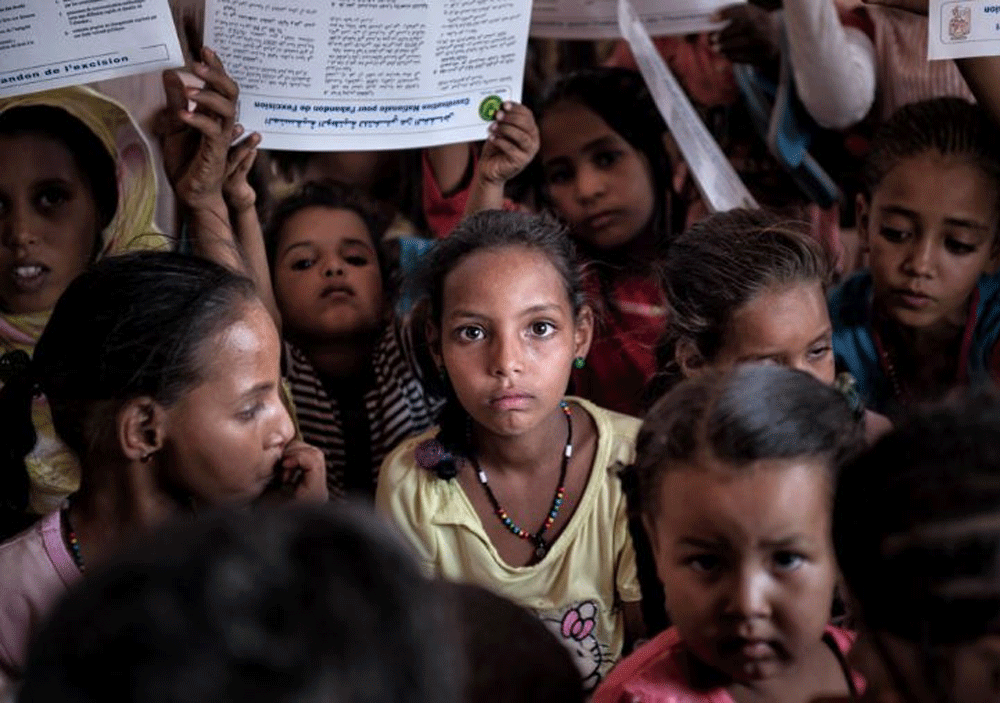
Economic Disparity and Nationalism – Part 2
By Dr. Lionel Bopage
Concentration of power
This situation usually leads to concentration of political and decision-making power in the hands of a few. This could lead to suboptimal use of human resources and cause political and economic instability. In turn, this will obstruct the ability to absorb foreign direct investment, which the capitalist governments mainly rely upon. Misery, poverty, and hopelessness could become pervasive in such a society. This provides an ideal environment for demagogues to raise their ugly heads.
These demagogues will make high pitch noises like saviours, without providing any solutions of substance. Nevertheless, such demagogues can raise a glimmer of hope among the ones whose lives have been adversely affected by this inequity. These nationalistic divisive demagogic leaders can emanate from any ethnic or religious background. Even if they utilise something that looks like a policy, it is solely a tactic used for grabbing power. Once in power they ditch or forget these policies, like those pledging to improve citizens’ economic circumstances and to eliminate their economic exploitation.
The 2008 economic recession that is considered the largest since 1929 created serious political repercussions. As a result, fundamentalist nationalist and religious currents came to the fore in many parts of the world. National and religious supremacy came to be asserted through violent extremism, mostly authoritarian and gave rise to many fascist trends. Simultaneously, political sentiments of certain segments of populations started moving towards extreme right-wing ideologies. Centralisation of decision making power in the hands of an autocrat as discussed is a manifestation of an extreme form of nationalism associated with fascist inclinations.
Concentration of power in the hands of an autocrat can be achieved via presidential and parliamentary elections or through extra parliamentary means. In the US, mostly racist fundamentalist right-wing groups brought Donald Trump to the Presidency. In many Nordic countries right wing groups have been elected to govern. Turkey extended the presidential term and also delegated prime ministerial powers to Tayyip Erdogan. Russian Federation concentrated power in Vladimir Putin’s hands and China made Xi Jinping president for life. Much closer to Sri Lanka, India, despite his hands being stained with Gujarati Muslim blood, Narendra Modi was made the Prime Minister.
Fascism
Fascism is based on the superiority complex of a nation bound by race, ethnicity or culture. This nationalist ideology is upheld by an anti-democratic totalitarian state. A fascist state needs to be totalitarian to ensure that its citizens support controlling aspects of their lives such as leisure time, education and political activity to ensure their support for the regime. Democratic elections do not need to ensure that candidates have national interests at heart. Parliament can become a talk shop and a rubber stamp instead of being a forum that devotes time to discussing, formulating, enacting and implementing policies. If other parties exist, pursuing an ultranationalist goal may be challenged; hence the need not to have other competing parties in parliament.
Democracy can be weak when a regime is incompetent or unresponsive, or when democratic traditions are not entrenched in the social fabric of a country. As a result, citizens become disenchanted and are willing to abandon democracy for another ‘stronger’ and ‘stricter’ regime. Fascism in the guise of ultra-nationalism flourishes in such an environment where democracy is weak, and nationalism is strong. This provides an ideal environment for fascism to replace the weak regime and effortlessly flourish for some time.
How does one come to support demagoguery? When income inequality prevails, most people, especially those at the lower end of the income spectrum find it extremely difficult to meet their needs, whether they are basic economic needs, psychological or self-actualisation. So, it is not surprising that fundamentalism, discrimination, racism and sexism become prevalent in society. Humanity at one time or another has had to confront such issues. When faced with socio-economic and political crises, people will use whatever means available to realise their needs. That is when people start relying on demagogues. That is how fascist trends have established roots in many parts of the world.
Over the past several decades in the western world, and certainly before that in some countries in Asia, totalitarian currents have surged under many pretexts. Humanity easilybecomes blind when they cannot satisfy their survival needs. This was the post-World War 1 scenario in both Germany and Italy. Italian and German democracies and democratic traditions were only recent and had weak roots. Unemployment grew with the economic crisis post-World War 1. The Treaty of Versailles made Germans culpable for starting World War 1. They had to accept punitive reparations and significant territorial concessions. Italians contended that they were not bestowed with the territory that should have been awarded to them. Feeling humiliated, national resentment became omnipresent.
The Fascist and Nazi parties promised to restore their respective country’s national greatness. Hence, Italians and Germans started supporting fascism. Germany and Italy pursued their national superiority complexes via the Italian Fascist Party and the German Nazi Party. Benito Mussolini, the leader (Il Duce) of the National Fascist Party intended to “guide the material and moral progress of the [Italian] community.” Adolf Hitler (der Führer) of the National Socialist German Workers’ Party wished to re-position the German nation as “the culture-founder of this earth.” They wanted the loyalty to their nations to be above and beyond religion and social class."
To realise such goals, they needed an anti-democratic totalitarian state that would decimate any prevailing democratic systems and institutions. Mussolini removed all politicalopposition by employing his secret police and banning worker strikes. He and his followers of the Italian Fascist Party consolidated power by enacting laws and employing violent means that transformed the nation into a one-party dictatorship. His aspirations for creating a totalitarian state ended when he was deposed by the King. Yet, in a few months’ time, he established a pro-Hitler puppet regime in northern Italy and became the leader of the Italian Social Republic. In 1945, while fleeing with his mistress, he was captured and summarily executed.
Hitler believed that the Jewish people were responsible for the economic exploitation of Germans during World War-II. Germans not only accepted Hitler’s falsified version of events, but condoned his savage barbarism, simply because this was justification for their own personal economic benefit.
Part 1: https://isis.lk/featured/1738-
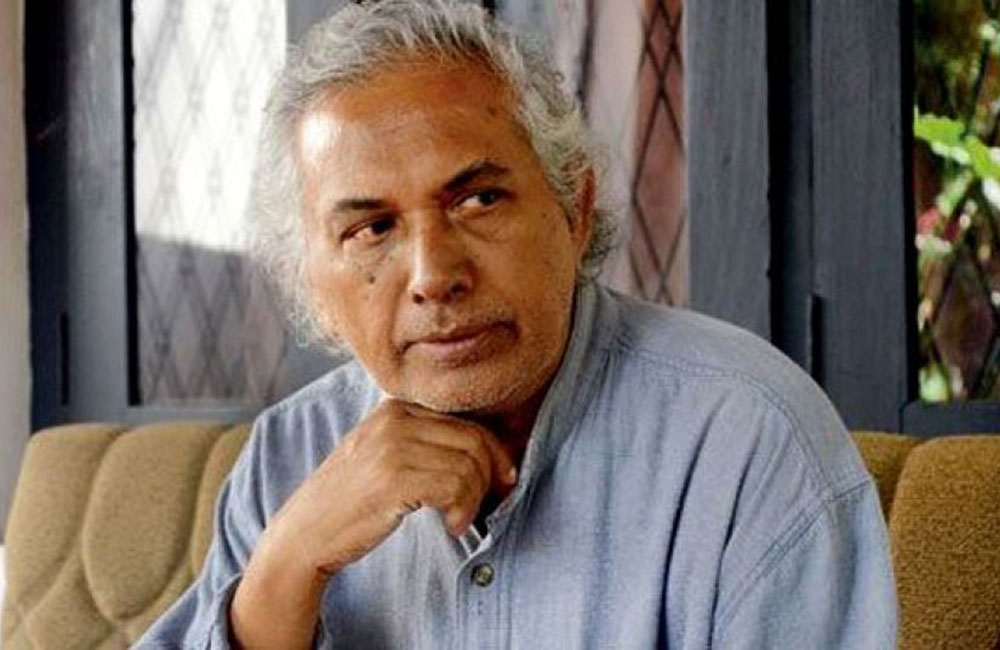
Do not look back; look forward to a pleasant future
By Dr. Vickramabahu Karunarathne
While Donald Trump was having discussions with Polpotian communist leaders of North Korea to negotiate no conflicts and peace, there were clashes between fascist racist demonstrates and left oriented anti fascist organizations in several western cities. In the protest in London police were forced to escort around 20 neo-Nazi protesters out of Westminster after they staged an “anti-Jewification” protest. Hundreds of counter-protesters chanted “Scum, scum, scum” as they followed the far-right activists from Whitehall towards Westminster tube station. Lines of police kept the two groups apart. The fascist demonstration against a Jewish neighborhood watch group, was originally due to be held in the strongly Jewish populated north-west London, but was confined to a static demonstration in Whitehall. Their numbers were dwarfed by anti-fascists, who targeted them with chants of: “Nazi scum – off our streets”, drowning out speeches the neo-Nazis made from behind police lines.
Far-right activists had planned their protest for the Sabbath in an area with a 40% Jewish population. They planned to burn copies of the Talmud – the book of Jewish law and tradition – and effigies, in private in order to avoid arrest but filmed for sharing online. But the Metropolitan police decided to impose conditions under the Public Order Act 1986, moving the demonstration to Whitehall and limiting it to one hour. They said senior officers did not have the legal power to ban a static protest, had a duty to safeguard the right to protest and could not impose unreasonable restrictions upon that right. So we can see how British workers and radicl professionals treat fascistic politics. This is the modern advice given by them.
We said the defeat of no confidence against Ranil was a people’s victory, forced through the parliament by the voice of the people who wanted to continue the democratic revolution started way back. Then there was baking to the ideals of democracy and workers, professionals and Tamil speaking people stood loudly with the man who dared to save the country from the disaster of the war. Smaller nationalities in the country new very well what is coming with the blessings of the fascistic Mahinda Chinthanaya. With that victory people expected Ranil and other leaders of Yahapalanaya will take this hard won victory seriously and devote more time to finish the back load of the democratic revolution. In Marxian terms people donot want a Kerensky and on the other hand do not demand a Lenin; but they have the right to demand that Lanka should go at least in the path of late leader of South Africa.
Yes, at that time Ranil did the right thing. It was against wishes of many that Maithripala was selected as the common presidential candidate to represent all political parties and all national and religious communities that were suffering under fascistic repression by the Mahinda regime. It became an attraction in the eyes of the international community which was on the verge of sanctions. All sensible people accepted the period of Mahinda regime was really bad. All decency and human rights were buried, and a handful of people, mostly from one family dictated the country’s future. They were no doubt taking the masses of this country, towards the dark hells of bad governance. Hence the liberation motto became Yahapalanaya or Good governance. On the other hand, as the economy was plundering towards disaster. It is the truth when Ranil says that today Lankans are paying for the losses made by Mahinda. At that stage his advisers prompted President Mahinda to call elections two years ahead, when he was enjoying Executive power, Legislative powers, including provisional and Local Government powers. One could argue if the economy was flourishing there was no need for an advance election. This fact alone is more than enough to answer the status of the country in 2015.
President Sirisena made the right move by carefully committing as a common candidate to establish democracy, equality and freedom in a common struggle with parties of the common front. To day he is under pressure to opt for saving his party that he served as Secretary General. However his inability to control the Rajapaksas and the SLFPers in Joint opposition shows his weakness. Many believe that increasingly he is becoming a puppet in the hands of Mahinda clan while the UNP has been the victim of this set back of his weakness in political leadership. His political mistakes were evident in his appointments made to various commissions and state enterprises. It appears as if the president hardly made proper consultations with PM! He was unable to take disciplinary action on his SLFP members. On the other hand Maithree took initiative to remove the then Bribery Commissioner, Dilrukshi Dias Wickremesinghe and created a vulgar situation.
In the last period Prime Minister and the Cabinet were blamed for common mistakes, the Head of State still with Executive powers did not defend when it mattered. At first clearly Ranil and the UNP were irresponsible in responding to the media; later Ranil’s pragmatism prevailed. May be discipline would serve their needs in the long run. That may not happen. Popular culture is to take the attacks on the ruling elite for every day fun. Even in the days of kings up to the British governors that was the tradition. Even today same aberrations are continuing.
Sadly the President saw the bond scam as the biggest sin of this country, which is calculated at less than $ 80 million. Money is not hidden and that can be traced. It could be a part of a political programme. On the contrary, Mahinda is supposed to have $ 600 million in a foreign account in a safe haven. That is just one example of the corrupt regime that ridiculed this nation and robbed it left right and centre. In the mean time the media of this country, especially the electronic, have failed to be the fourth pillar of democracy and are dragging this country to be once again handed over to a pit of snakes. It is no doubt; the current direction of this country is being dragged into uncertainty and darkness. Under this uncertainty Maithree is operating. His agenda is now clear, that he is trying to continue his political life by retreating to linkup with the pro Mahinda forces once again. However efforts for a new understanding have been fruitful we are told. May be the president wants to be a party to democratic revolution still continuing. President must admit his dream of resurrecting new Bandaranayake era has ended up resurrecting a SLFP where fascistic Mahinda is still calling the shots. Last decisions of the parliament must open the eyes of every body to the real wishes of the people. Mahinda regime is a closed chapter in the history of Lanka. It is dark and sad chapter, not even a live and pleasant President of the country could give a new life to that political Black Death. Do not look back; look forward to a pleasant future.

Economic Disparity and Nationalism – Part 1
By Dr. Lionel Bopage
The cold war in the form that existed in the last century disappeared with the collapse of the state capitalistic model of ‘socialism’ as was practised in the Soviet Union and the Eastern Bloc. The world is left with a few countries that follow the same state capitalistic model. Despite the belief that the cold war ended with the collapse of the Soviet Union, a new cold war appears to have emerged with a vengeance. Though the protagonists of this appear to be the corporate capitalist interests of the United States and its allies versus the Russian Federation and its oligarchs, the real focus of the west’s fear and ire could be the Peoples’ Republic of China.
Since the collapse of the Soviet Union, the corporate capitalist system has reigned supreme almost all over the world, with its attendant severe socio-economic and cultural crises. Peoples’ democracy in the proper sense of the word has not been able to survive with the reappearance of unbridled capitalism in the corporate and state sectors. Such crises have made many western capitalist societies almost dysfunctional. Under open economy and free market conditions, economic disparity has continued to surge, mainly due to the regulatory environment imposed by the ruling corporate interests and the free hand given to them to increasingly monopolise global resources.
Historically and in the present era, governments elected by the populace that are not compatible with the interests of powerful capitalist conglomerates and states have been overthrown by killing tens of thousands of men, women and children to bring to power corporate friendly tyrants. The United Nations is also not immune; it has been made to toe the line of neo-liberal and conservative regimes with threats of sidelining it financially. It has been used against those who oppose the new neo-liberal agenda. In this sense, the United Nations has turned out to be an impotent, stranded entity, a mere voyeur, made to watch impotently as blood is been spilt in every corner of the world.
Economic Disparity
Corporate economists are neither concerned about humanity nor are they compassionate. They do not care about economic and income disparity; for them people are either consumers or units of production. Their logic is that people need to work harder to access upward social mobility. Income inequality they argue, keeps their motivation up. They assert that wealth redistribution through social security measures and other welfare programs are expensive. So, despite many faiths preaching compassion, the world has become a more miserable place. Opportunities for economic growth and development have tumbled further downwards.
International Monetary Fund (IMF) and the Organisation for Economic Co-operation and Development (OECD) are not institutions propagating humanitarian views. Yet, they have concluded that income inequality is affecting economic growth. The Center for European Economic Research (ZEW) has contested these findings, but realpolitik indicates that income inequality is on the rise and low-income households increasingly find it difficult to invest in higher education. Thus, their opportunities for upward social mobility are impaired.
According to the World Inequality Report, income inequality in all regions has increased in recent decades, and in the Middle East and sub-Saharan Africa inequality is obscenely high and persistent. Inequality in India and China are also of massive proportions. The gap between these countries and those in the west has become narrower, thus reducing global inequality. The global Gini Index has dropped to 65 due to rapid economic growth in several Asian countries. By 2035, the Index is expected to drop to 61.
Rise of nationalism
Accordingly, global income inequality between nations though high is reducing, however the gap between the rich and the poor within countries has widened. Such trends as a whole and individually may explain the rise of populism, nationalism and protectionism in some parts of the world. Regimes pursuing a capitalist path of development have found it difficult to reverse or control this trend of increasing inequality. As recommended and sometimes demanded by the IMF and the World Bank, structural reforms in the form of privatisation of public assets have been carried out in many such countries with devastating results impacting on social fabric.
Regimes in Sri Lanka have pursued a similar path. The global experience during the past several decades is that such measures have made these countries rich as a whole, but with income inequality predominating. In this process, governments have become poorer. According to the World Inequality Report, this is one of the major factors restricting the ability of regimes in tackling inequality.
The current situation in Sri Lanka exemplifies this process. It is characterised by the loss of confidence in both state and corporate sectors and institutions, erosion of social bonds and increasing uncertainty about the future. Widening inequality has significantly affected economic growth and macroeconomic stability. Inequities related to accessing education, health care, and finance have become prevalent. Thus, certain segments of society are being subject to persistent disadvantage.
The article is part of a four part series by Dr. Lionel Bopage.
Page 6 of 10
